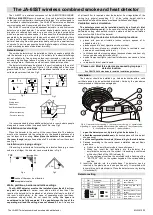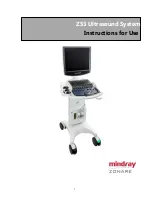
52
ADJUSTMENTS AND OPERA
ADJUSTMENTS AND OPERA
ADJUSTMENTS AND OPERA
ADJUSTMENTS AND OPERA
ADJUSTMENTS AND OPERATIONS
TIONS
TIONS
TIONS
TIONS
IMPORTANT
The data of the previous Tables (Seed and Fertilizer) can vary due to several
factors. We ask therefore to observe with attention the following procedures:
Practical Test of Seed and Fertilizer Distribution
The most indicated way to check both seed and fertilizer rates is in the own field
where the plantation will take place. Follow these steps:
- Use whenever is possible the same tractor and Operator to make the plantation.
- Maintain the same inflation in the both planter tires (70 psi).
- Mark the distance for test. Example of the fertilizer Table, 50 linear meters.
- Fill the planter hoppers at least to the half, and travel some meters to fill the
distributors, before entering in the demarcation area.
- Place the collection bags to the fertilizer dispensers. (Use plastic bags). In the
seed dispensers use tow to hinder the exits.
- Move the tractor in the demarcation space, using the same speed of that one
used in the whole plantation.
Recommended speeds:
5 to 6 km/h for the plantation of Corn and Sunflower.
6 km/h for the plantation of Beans/Sorghum/Acid Delinted Cotton.
7 km/h for the plantation of Soybean.
- Now it is enough to weigh the fertilizer contained in the bags and to compare
it to the 2nd line of the Tables of the previous page (Grams in 50 meters per row).
- Remove the seed dispensers tow, picking up the seeds for counting. By doing
so it is also possible to verify any damage occurrences in the seeds.
- If necessary, remake the test altering the adjustments.
- After getting the required amount and still in the field, move the tractor in the
same speed so, leave the fertilizer and the seed to reach the soil, for better verifying
the distribution uniformity.















































